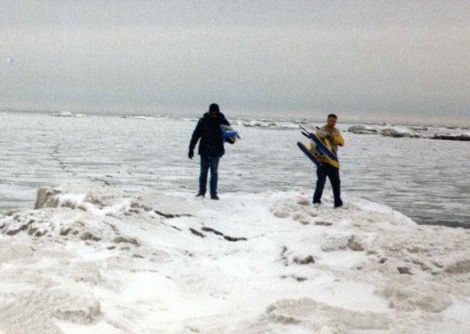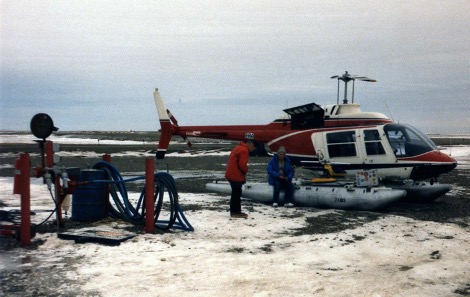I’ve done many things with my helicopters, ranging from crossing the English channel, through to spying missions in Eastern Europe. But perhaps the strangest and yet the most challenging took place in the Arctic.
I was practicing for the team trials for the European F3C championships when a car came across the field towards me. A man with a beard got out and said “Hey man, do you reckon that you can land that thing on the back of a whale?”
He told me that he studied whales and other sea creatures on behalf of an oil company and that he was trying to find out the migration route of whales from Alaska to California. They wanted to put radio beacons onto the whales so they could plot the route they took around the Arctic, but placing them on the back of the whale was proving to be very difficult. They had tried by firing them from a crossbow with a hook that would attach itself to the whale but nine times out of ten the crossbow would hit the whale below its natural waterline, which meant they couldn’t pick up the signal being transmitted.
He went on to say that while sitting in his office he had seen me flying and thought that it would great if he could use a radio control helicopter, as full size helicopters tend to scare the whales under water. He wondered if it would be possible for a model helicopter to land right on the back of a whale and place the radio beacon so that it would be above water for most of the time.
And so I went off to Alaska with a couple of models fitted with floats in case I had to land on water.
The way it worked is that a spotter plane would circle in the sky looking out for whales. Once a whale had been spotted, I would then put my model in the water, take off and we’d go after it following in a rubber dinghy. As the whale surfaced I would land on its back and a release mechanism would deposit the radio beacon on its back. A release system would then allow the helicopter to fly away leaving the beacon behind on the whale.


